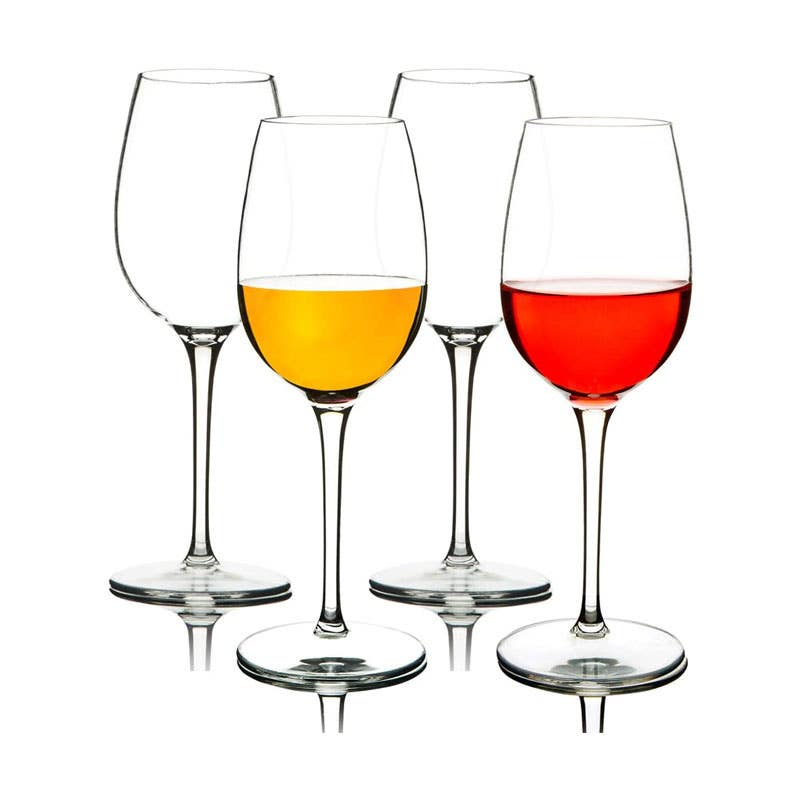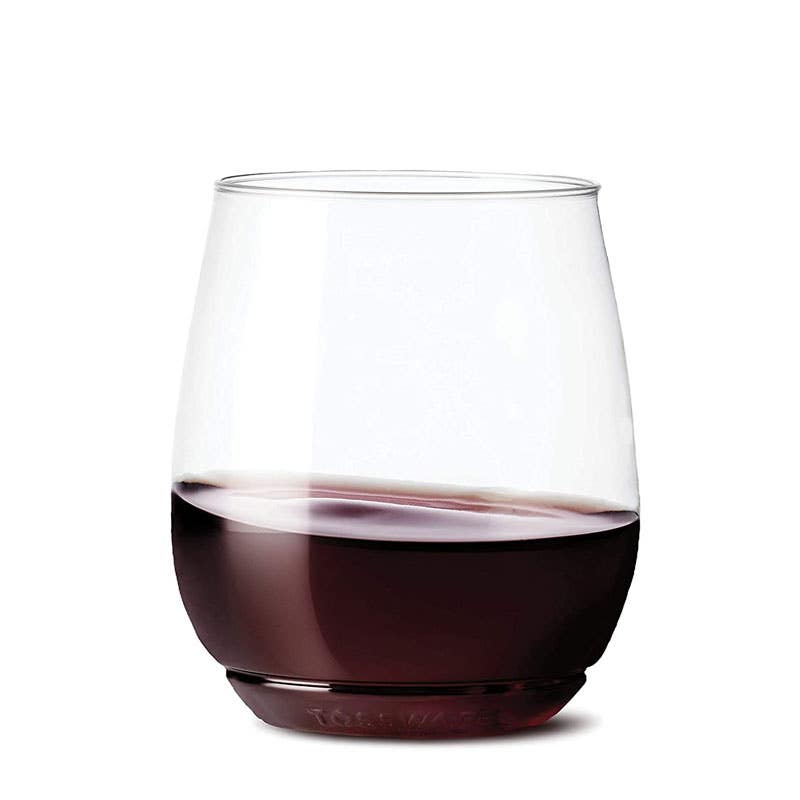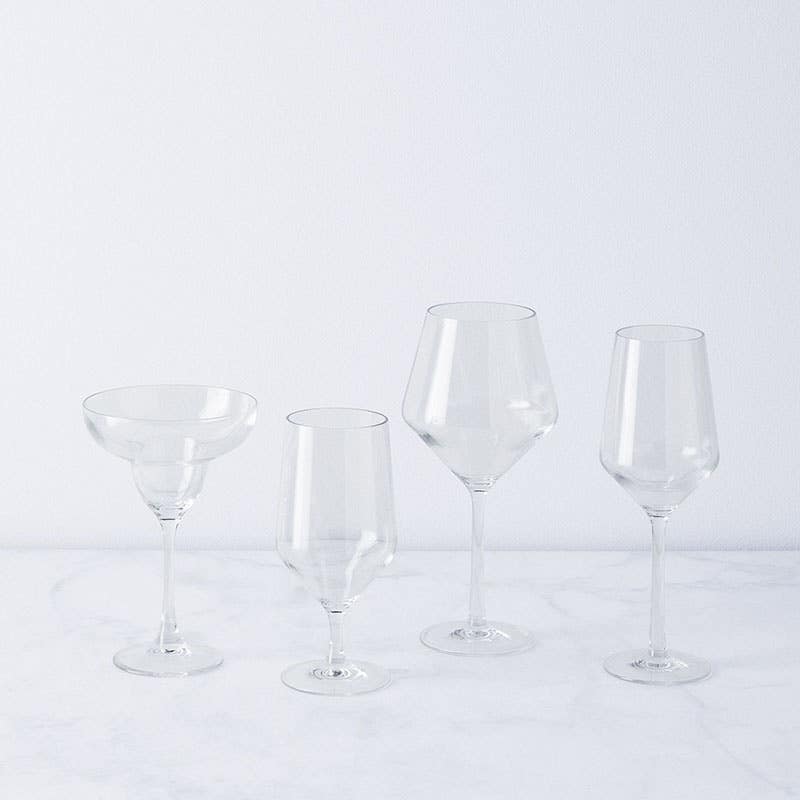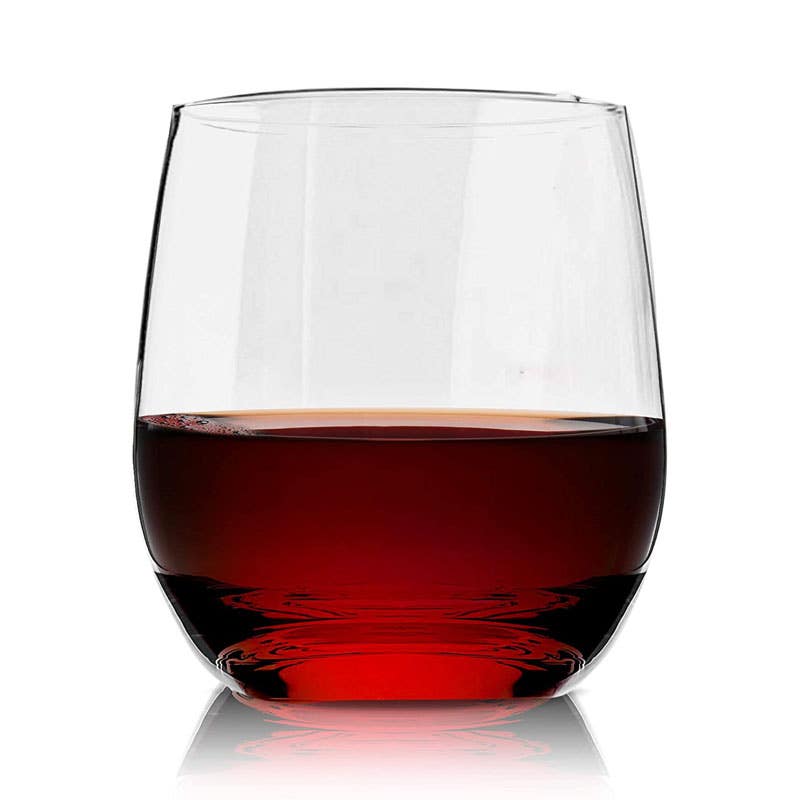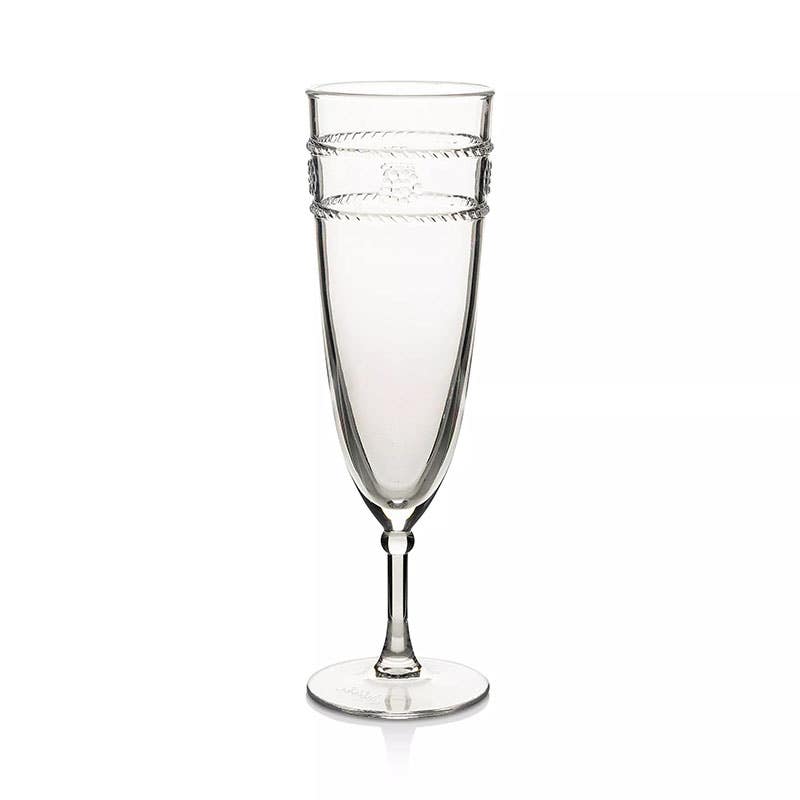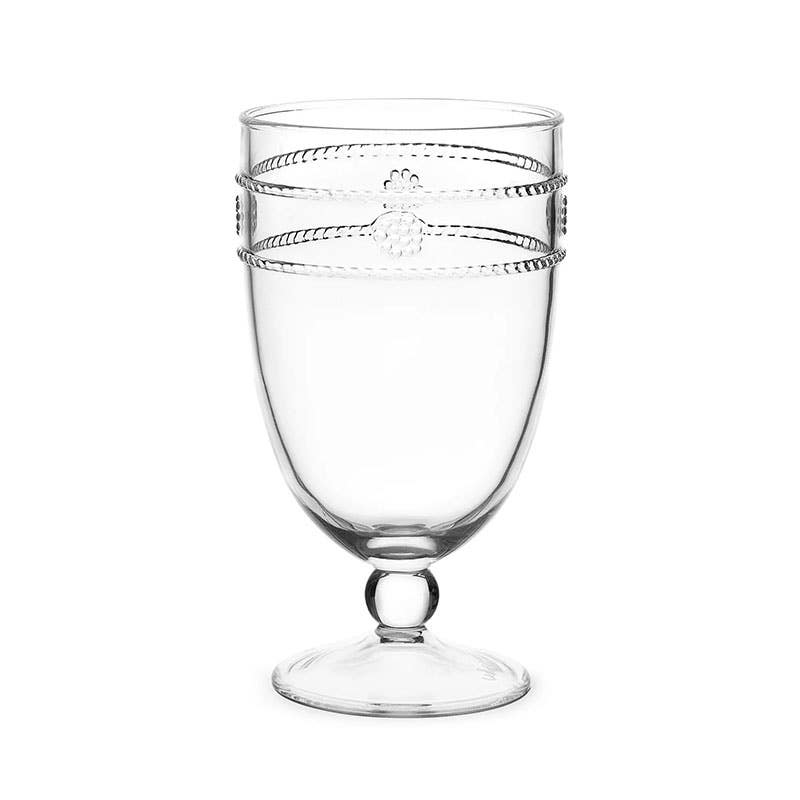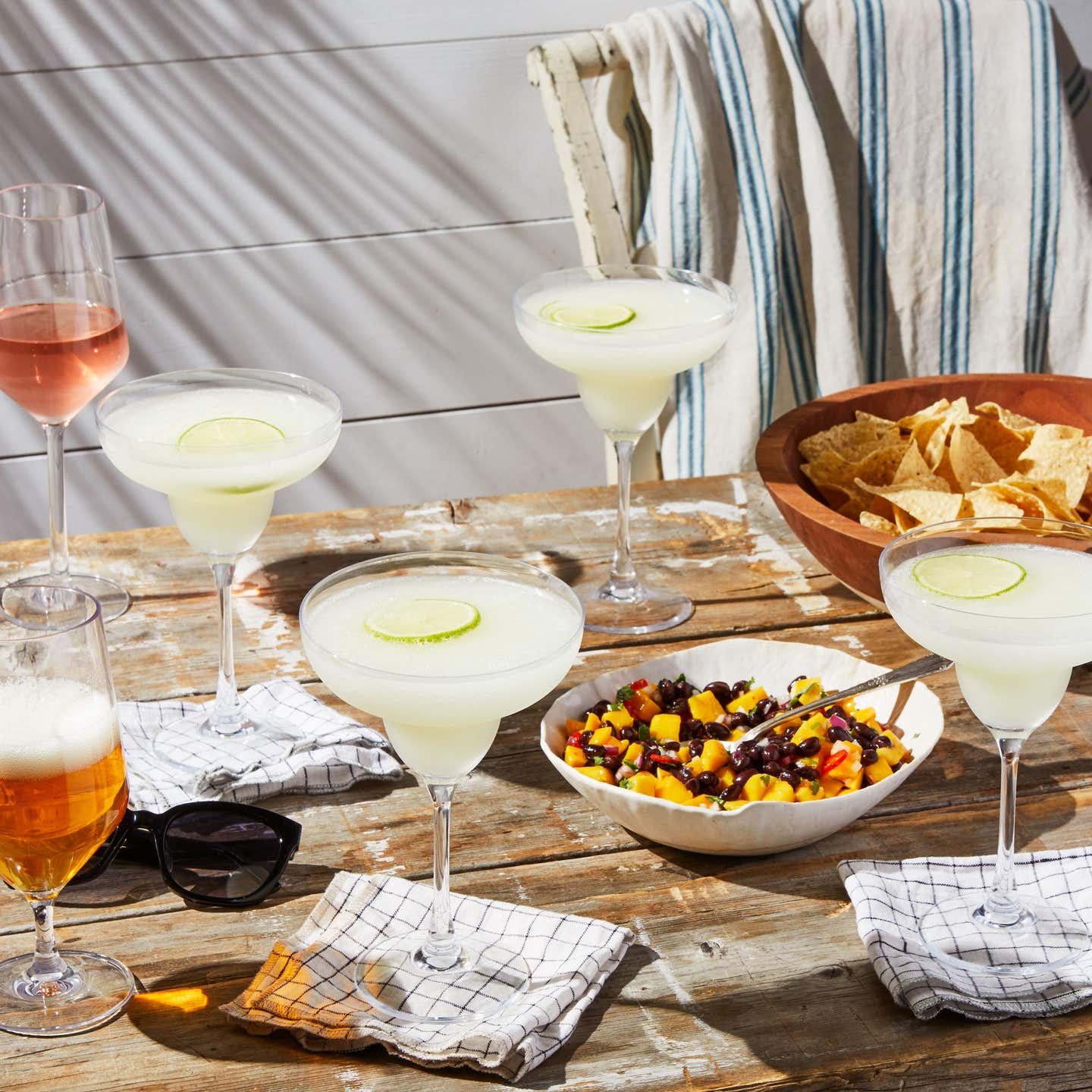
Whether you’re headed to the beach or just a friend’s backyard, you can’t make the most of the great outdoors this summer without a bottle of wine in tow. But before you break out your finest glass stemware—or worse, the red Solo cups—consider this: Even the pros rely on plastic glasses for every kind of outdoor situation. “For me, plastic glasses are an example of form following function,” says Matt Crafton, winemaker at Chateau Montelena in Napa Valley. “I use them for picnics, camping, or large events where I don’t want to clean dozens of glasses carefully by hand.”
That’s because the best plastic wine glasses look a lot like the real thing, are more durable (and, therefore, sustainable) than the tumblers of yesteryear, and are more practical than their fragile tableware cousins. They’re also way more low-key. While you’d probably sip a bright Prosecco in a totally different shape, style, and size of glass than an intense Malbec or refreshing rosé, the experts we spoke to take a one-glass-fits-all approach when imbibing outside. Vanessa Price, wine writer, teacher, and author of Big Macs and Burgundy: Wine Pairings for the Real World, says there’s no need for separate red, white, and sparkling sets. Any occasion that calls for sipping from plastic, “my assumption is it’s an entry-level, everyday, crowd-pleaser wine” being served, so you only need a single all-purpose shape. “If the wine crosses a certain threshold of ‘fine,’ put it in a proper glass, in terms of both shape and material,” she suggests.
For Arden Montgomery, sommelier and cofounder of Argaux, an online wine retailer and membership club, “the key to a quality classic plastic wine glass is durability and weight,” she says. “I find that many plastic glasses are flimsy, and I worry they might blow over in the wind, even with wine inside!” Not so with these six expert-vetted picks that are perfect for your next impromptu park hangout, lively garden party, and everything in between. Whether you want something petite or generously sized, here are our picks for the best plastic wine glasses for any occasion.
- Best Overall: Michley Unbreakable Tritan Shatterproof Wine Goblets
- Best Value: Tossware Pop Plastic Wine Glasses
- Best Splurge: Fortessa Tableware Solutions Outdoor Wine Glasses
- Best Stemless: Vivocci Unbreakable Plastic Stemless Wine Glass
- Best Special Occasion: Juliska Isabella Acrylic Flute
- Best Goblet: Juliska Isabella Acrylic Goblet
Features to Keep in Mind
Stem vs. Stemless: According to Montgomery, the main difference is temperature: “Wine is bound to get warmer quicker” in stemless vessels (that said, she and Crafton both prefer them). Stems also ensure your wine tastes and looks its best, says Price. “Fingers are full of oil that can make a glass look gross, quick, so keep your paws off the bulb and use the stem.” Aesthetics aside, there’s practical value in a slim handle: “A stem may seem hoity-toity, but really, it just allows you to serve and re-serve the same glass without changing it out or washing it,” Price says.
Material: The crème de la crème of plastic glassware, Tritan is a co-polymer that’s shatterproof and free of harmful chemicals like BPA (bisphenol-A) and BPS and those that cause EA (estrogenic activity); it’s also the most convincing glass lookalike because it’s clear, not cloudy or streaky like some plastics. Other options include polycarbonate, which is shatterproof but not BPA-free; acrylic, which is shatterproof and BPA-free; and slightly cloudy polypropylene, which is BPA-free but may feel more rubbery when compared with Tritan and acrylic’s glass-like rigidity.
Dishwasher Safe: Tritan is safe to go in the dishwasher; materials like polycarbonate and acrylic are not. If you’re unsure what your plastic wine wares are made of, check the resin identification code—that numbered, triangular recycling symbol found on the bottom. “Some plastic can’t withstand dishwashing with hot or even warm water,” says Montgomery. For handwash-only sets, “the most important part is to dry the glasses right away,” she says.
Our Top Picks
Best Overall: Michley Unbreakable Tritan Shatterproof Wine Goblets
Best Overall
Price used this kind of stemmed glass at a Montauk pop-up she hosted last summer: “Some people thought they were glass until they actually picked them up,” she says. “I prefer something that is closest to the look and feel of an actual wine glass, and these have a minimal seam—some plastic glasses have a thick seam, which can ruin the aesthetic effect—and they’re very clear, like glass.” Safety-wise, Price likes that they’re BPA-free, as well as dishwasher-friendly. Because why spoil the buzz of sharing a deliciously funky natural wine among friends with a sink full of glasses to gingerly hand-wash afterward?
Best Value: Tossware Pop Plastic Wine Glasses
Best Value
A responsible choice in more ways than one, Tossware’s 100% recyclable POP glasses are ultra-affordable (they’re just over a buck each) and sustainably made from a BPA-free recycled polymer derived from repurposed water bottles. They’re also stackable thanks to the ‘pop and lock’ notch near the base. In other words, you can easily fit a dozen into your beach tote. With over 4,000, mostly 5- and 4-star ratings on Amazon, reviewers rave about the light weight, plastic-free taste, and impressively scratch- and shatter-resistant construction. Just don’t accidentally throw them in the dishwasher or use them in extremely steamy situations, like, say, when the forecast is heading toward triple-digits: They’re not heat-friendly, which some reviewers learned the hard way.
Best Splurge
Elevate your next pool party or backyard bash with a different kind of six-pack: These sleek all-purpose glasses, constructed from Tritan, are ultra-clear, so they look remarkably like real glass. Their stems are on the short side, ideal for stashing in a picnic basket or beach cooler, but worthy of filling with that mid-range Spanish cava you’ve been excited to pop open. “Use a stem for a wine that someone put the time and energy into you consuming and enjoying,” says Price.
Best Stemless: Vivocci Unbreakable Plastic Stemless Wine Glass
Best Stemless
This 12.5-ounce option is made of Tritan and can absolutely pass for glass thanks to its thick base and thin lip. Plus, it has over 3,500 ratings on Amazon, the vast majority of which are 5-star raves praising their sturdy, versatile, and easy-to-hold design. Like Price, Crafton also recommends Tritan over other materials, but he’s a fan of this stouter, sturdier silhouette: “Stemless all the way; they’re easier to pack and more stable on a table, beach blanket, or rock,” he says.
Best Special Occasion: Juliska Isabella Acrylic Flute
Best Special Occasion
Toasting a pal’s recent engagement, a well-deserved promotion, or another festive occasion with something bubbly? Montgomery recommends these sophisticated eight-ounce Juliska flutes, which are way more stylish than your average plastic vessel and are trimmed near the lip with a pattern inspired by 17th-century Bohemian glass motifs. “These are more durable, the stem is shorter, and the flute is a bit wider than a standard [glass] champagne flute,” she notes. Bonus: That extra width means “more champagne in the glass.”
Best Goblet: Juliska Isabella Acrylic Goblet
Best Goblet
“Don’t make it more complicated than it needs to be,” Montgomery says. For everyday use (and sipping more than just bubbles) Montgomery likes using a goblet because it’s a “universal shape” that works for white, red, rosé, and sparkling wines. This one has the same Bohemian-inspired glass design and acrylic materiality as Juliska’s Isabella flute, but with a more generous 12-ounce capacity and a super-short stem that makes it sturdier than other stemmed options.
Ask the Experts
Are acrylic drinking glasses safe?
Yes: Like Tritan, acrylic doesn’t contain or release BPA when it comes into contact with liquids, says Price. However, you’ll have to hand-wash acrylic glasses, which aren’t dishwasher-safe.
How long do plastic wine glasses last?
Provided you take good care of them, “they should last a long time,” says Montgomery. She hand-washes glass and plastic stemware even if it’s dishwasher-safe to extend their life. To keep plastic glasses ultra-translucent and sparkling clean, “the most important part is to dry them right away,” she says.
Keep Reading
Continue to Next Story
